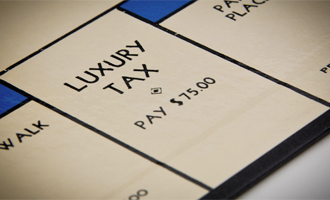
“Almost half of all Americans pay no taxes!” That’s the claim bandied about in elections and overheated television talk-fests. It refers only to federal income taxes, from which various groups are exempt. But many other taxes are also collected at the federal, state, and local levels. When all kinds of taxes are added up, almost all Americans pay substantial amounts. In fact, poor and middle-income people frequently fork over higher shares of their incomes than the very rich.
Federal Income and Payroll Taxes
The U.S. federal government relies on two big taxes collected from large numbers of Americans: the federal income tax and payroll taxes regularly deducted from wages and salaries to cover Social Security and Medicare benefits. Income and payroll taxes each contribute about 40% of federal revenues. Almost half of U.S. households currently do not owe federal income taxes, but over three-fifths of these “non-filers” are workers who contribute very substantial payroll taxes. For example, Americans making the lowest incomes pay nearly 9% of their wages in payroll taxes, about the same percentage as middle-income workers pay.
Only about 17% of American households pay neither income nor payroll taxes, because they are headed by people in special sub-groups:
- Elderly men and women, who previously contributed payroll taxes during their working lives, living on their Social Security benefits.
- Students or disabled individuals.
- Workers unable to find jobs. During the recent recession, the numbers of long-term unemployed people not filing income tax returns went up.
- Active-duty members of the U.S. military, who do not have to pay taxes on their combat pay and do not owe income tax after having been deployed. more...

 Research to Improve Policy: The Scholars Strategy Network seeks to improve public policy and strengthen democracy by organizing scholars working in America's colleges and universities. SSN's founding director is Theda Skocpol, Victor S. Thomas Professor of Government and Sociology at Harvard University.
Research to Improve Policy: The Scholars Strategy Network seeks to improve public policy and strengthen democracy by organizing scholars working in America's colleges and universities. SSN's founding director is Theda Skocpol, Victor S. Thomas Professor of Government and Sociology at Harvard University.